13. Sombe (or a Four Hour Excerpt from the Daily Routine of My Grandmother)
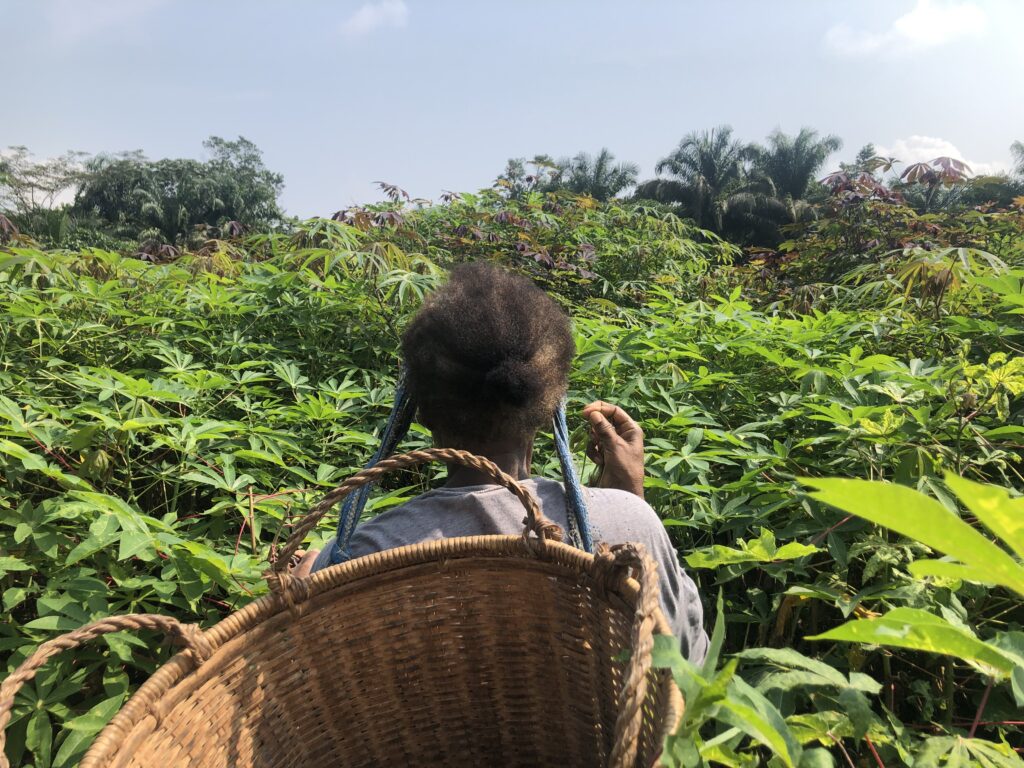
Today is my 317th day in Kitindi. Every one of those days, my grandmother has served the same meal twice.
Cassava is not native to the DRC, but it’s been in this region for centuries. As Portuguese slaving activity increased on Africa’s western coast, the slavers were having difficulty feeding their captive populations. In order to address this, they introduced high-yielding American crops to the western and central African coasts in the 16th century which gradually spread inland. Among these were maize, groundnuts, lima beans, and, of course, manioc, also known as cassava (Vanisina 1990). Cassava was the greatest of these imports for several reasons: it was the best adapted to forest habitats, the highest yielding, and valuable because it could be processed into a “bread” which was easily preserved. However, Vansina also notes that the transformation of cassava into something edible “required at least twice the amount of labor that other foods did,” most of which “had to be carried out by women and slaves” (1990, 214).
A lot of what Vansina wrote about in Paths in the Rainforest is observable in my immediate surroundings, most notably with cassava. Here, cassava is another wonder plant (along with the magungu I wrote about last month). It’s a woody shrub that can grow up to six feet tall and sprouts branches topped with broad, multi-pronged leaves. The Balega (my family’s ethnic group and the dominant ethnicity of this region) have a saying, “A Mulega is like a cassava branch; no matter where you throw him, he can grow.” My grandmother has two big cassava fields, each about half a football field in size. Earlier this year, I found that she and her farmhand had dug up large swaths of one field and piled the cassava branches in stacks three feet high. A few days later, I observed small mounds scattered around the empty field with short cassava branches sticking horizontally out of the dirt. Within a week, the sticks had sprouted new branches and leaves, and within six weeks, the new cassava plants were two to three feet tall. Henri and I were in awe at the plant’s fertility. Well-suited for the rainforest indeed.
Cassava is grown all around Kitindi. A colleague from UAK, Willy Wasso Witte (sometimes stylized “Willy Wasso 8”), claims that the majority of the population survives off subsistence farming, and all of these farmers grow cassava. Because of housing density in the village, a family’s field is rarely right next to where they live. Instead, it can be up to five miles away, out of town and off the road a bit or tucked away in the forest somewhere. Two weeks ago, I visited Willy’s field, located about three miles west of his home, where I helped him plant pineapples and harvest peanuts (two more plants with South American origins). After following RN2, we turned north off the road onto a small path which immediately began ascending a small mountain. Thick branches hung over both sides of the path, but, after five minutes, we emerged into a vast hillside clearing where Willy grows mostly cassava, in addition to peanuts, pineapples, bananas, peppers, tomatoes, and corn.
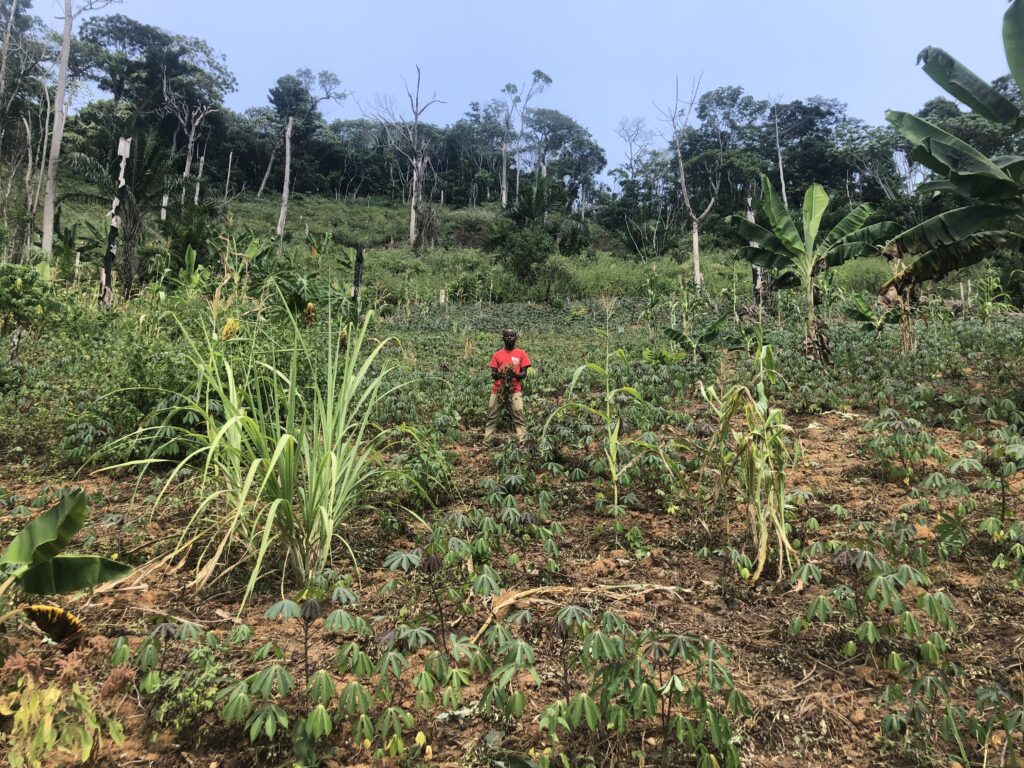
Cassava can be consumed in multiple fashions, though all are somewhat labor-intensive. Roots of certain species can be eaten just dried and raw. Then, there’s the “bread” that Vansina alludes to which is called in Swahili bugali (or ugali) and resembles what other countries call “foufou.” It is commonly consumed as a doughy ball made from the flour of ground cassava roots, and it is used as a medium for consuming something else like meat, sauce, or sombe. Finally, there is sombe itself, made of the ground leaves of the cassava plant. Harvesting and using the cassava roots is a lot of work, as it requires digging up the plants, cutting off their roots, peeling the roots, and further preparing them in various ways. However, while relatively easier, sombe preparation is still a multi-hour process, and one which my grandmother and the matriarchs in nearly every local household partake in daily.
Every day, usually about mid-morning, my grandmother waddles to one of her two fields with her basket and a broken machete to harvest that day’s leaves. Usually, one or every step of the sombe preparation has conflicted with my teaching schedule or other activities, but I resolved to remain with her from start to finish this week so that I could experience the entirety of the process as she does.
We got to the larger cassava field around 10:00 am, and I observed as she picked cassava leaves from their branches. She complained that the dry-season sun was harsh on the plants, resulting in dryer leaves and sombe of a lesser quality. Despite this, she did not discriminate too much in her leaf picking. The leaves ranged from deep green to green-but-yellowing to dark purple, but she and I harvested all kinds and placed them in her basket. She picked a path through the entirety of the field, partly to show all of it to me, partly to take only a few leaves from each plant, and partly to avoid harvesting from plants that were too young. According to her, cassava leaves are best harvested after the plants are one to two years old. Earlier this year, I was impressed to learn that she has a system of planting sections at intervals of two to four months. This staggered planting, along with her only harvesting a few leaves from each plant at a time, ensures a constant supply of high-quality leaves from healthy plants year-round. A mature section can be harvested over the course of a few months until all its leaves are gone, at which point its roots can be harvested for bugali and its sticks can be replanted for future use.
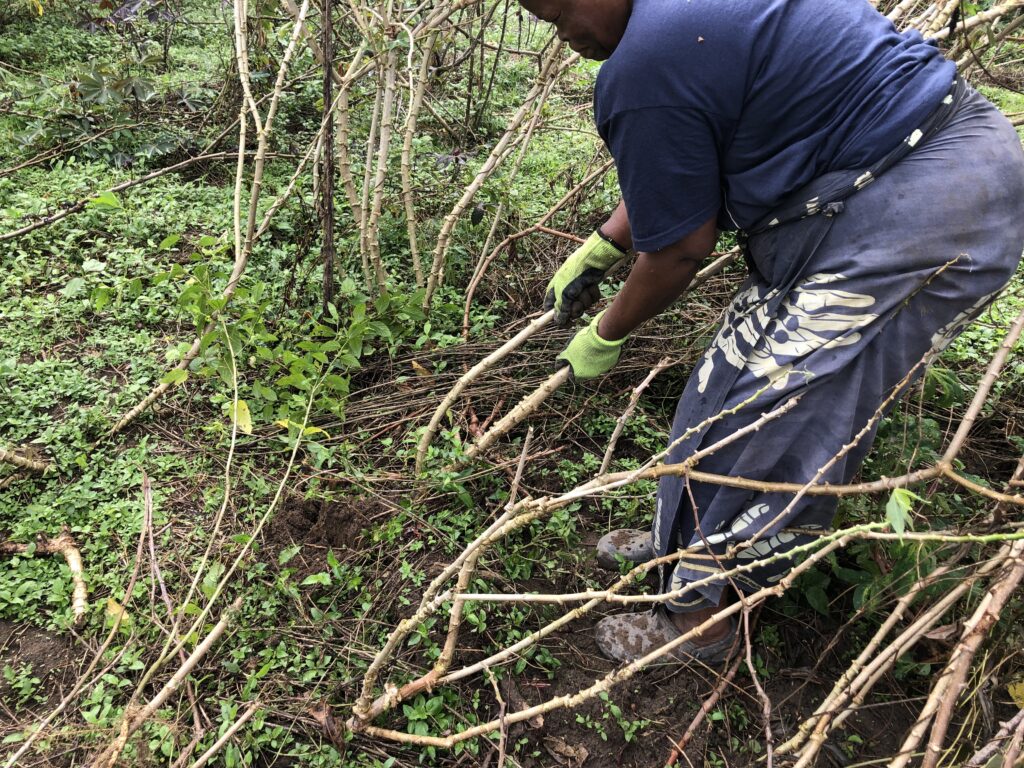
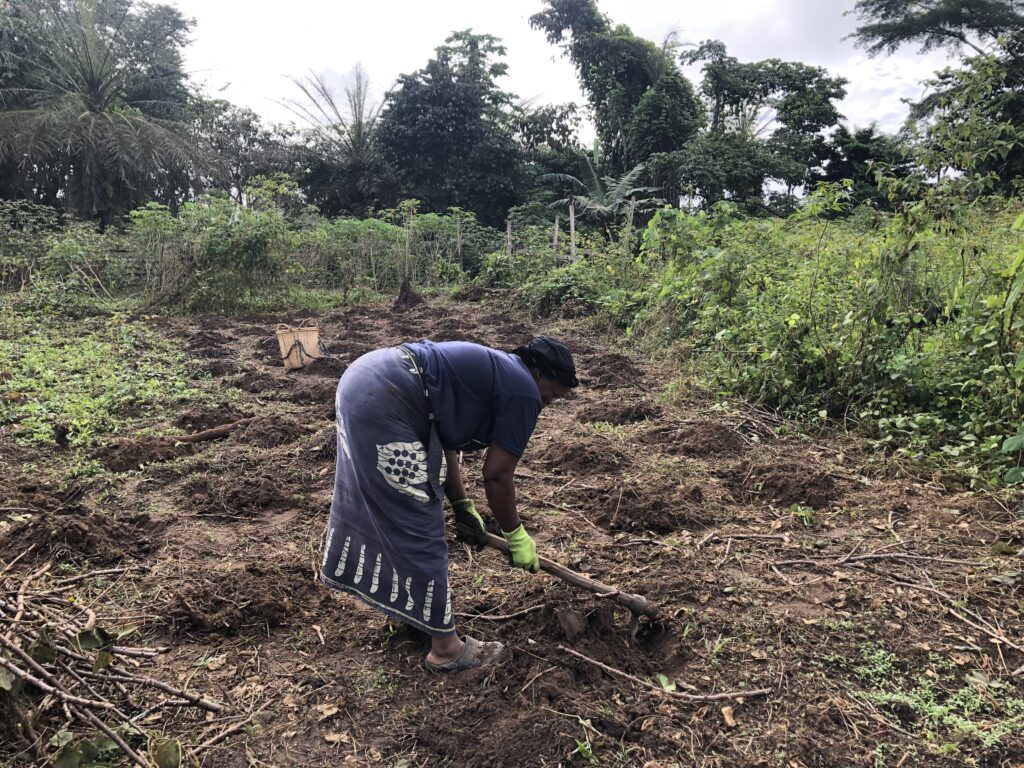
My grandmother is in her early seventies and has had a hip replacement, so she moves slowly but intently along her daily course from house to field to house again. Around 11:00 we were back at her kitchen—a small brick building just outside our back door—where we began the subsequent steps of the process. The leaves had to be de-stemmed. While de-stemming, we ignited her small iron charcoal stove so that it would be ready for the heating steps. We heated the leaves in a big pot to soften them and then took them off heat to be placed in the kino (a big wooden mortar) and pounded into a paste with the mutuandio (a big wooden pestle). We pounded the leaves for about twenty minutes until my grandmother was satisfied with their consistency. Meanwhile, we had a pot of water on the stovetop approaching a boil. Once the water was boiling and the leaves a paste, we put the leaves into the water. Finally, we added what looked to be three cups of fresh palm oil and three tablespoons of salt to the mixture (my grandmother never measures). No need to mix these ingredients in—the final step is simply to wait until all the water has boiled away. In the end, it seems the oil and salt simply seep into the cassava bed below. The whole process from field to table takes three to four hours.
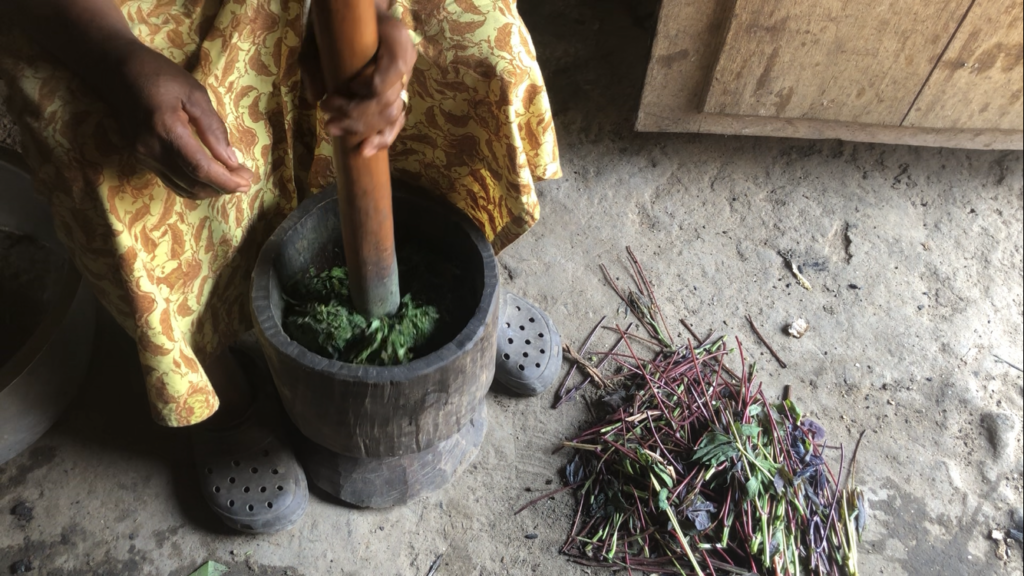
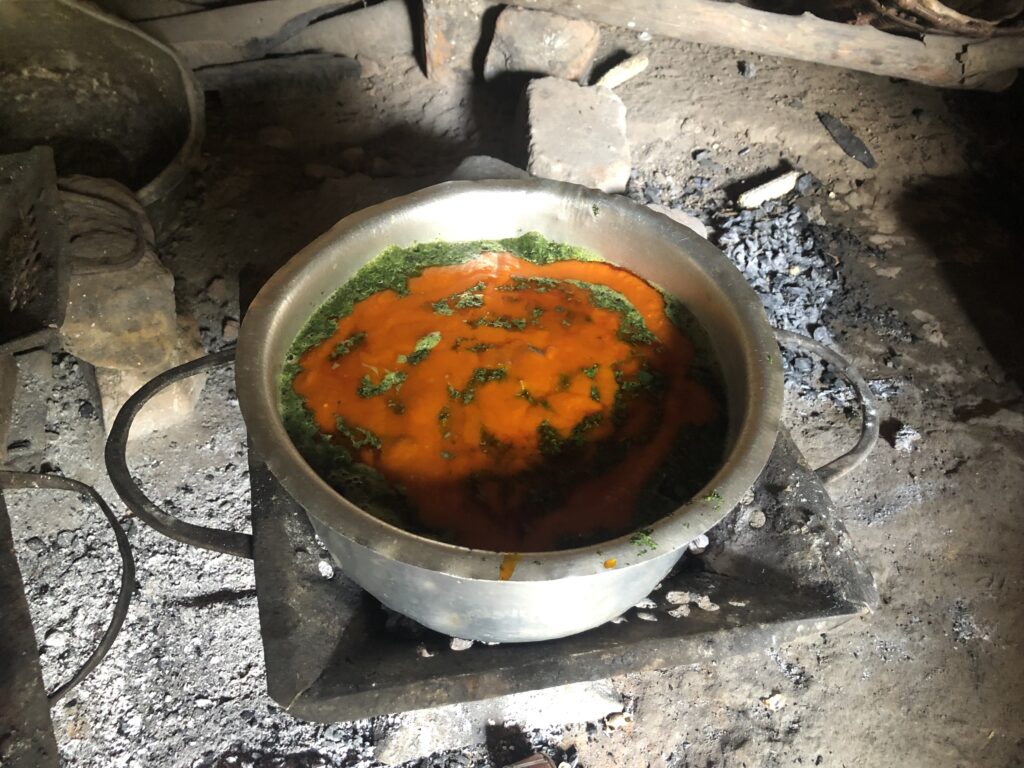
Almost everybody in Kitindi eats sombe once or twice a day, usually with bugali. Other things get added like meat, fish, rice, corn, groundnuts, and fruits, but these are not accessible to everyone all the time. Meanwhile, cassava flourishes and has the versatility to produce both a vegetable and a starch. Along with rice, my grandmother prepares sombe twice a day, and that’s what she, my grandfather, and the extended household eat. I hate to say it (I really do), but, personally, I detest sombe. Henri and I got as creative as we could to diversify our diet, and we were fortunate to have the means to do so to some degree. However, options in the village remain limited no matter what, and it’s sombe that was always there, so it’s sombe that we’ve eaten nearly daily. I won’t miss it. However, I can’t help but appreciate the plant’s vitality to the region, and I especially won’t forget my grandmother—seventy-two years old—and all the other women whose unenviable and unchanging routines nourish their families with roots, leaves, labor, and love.
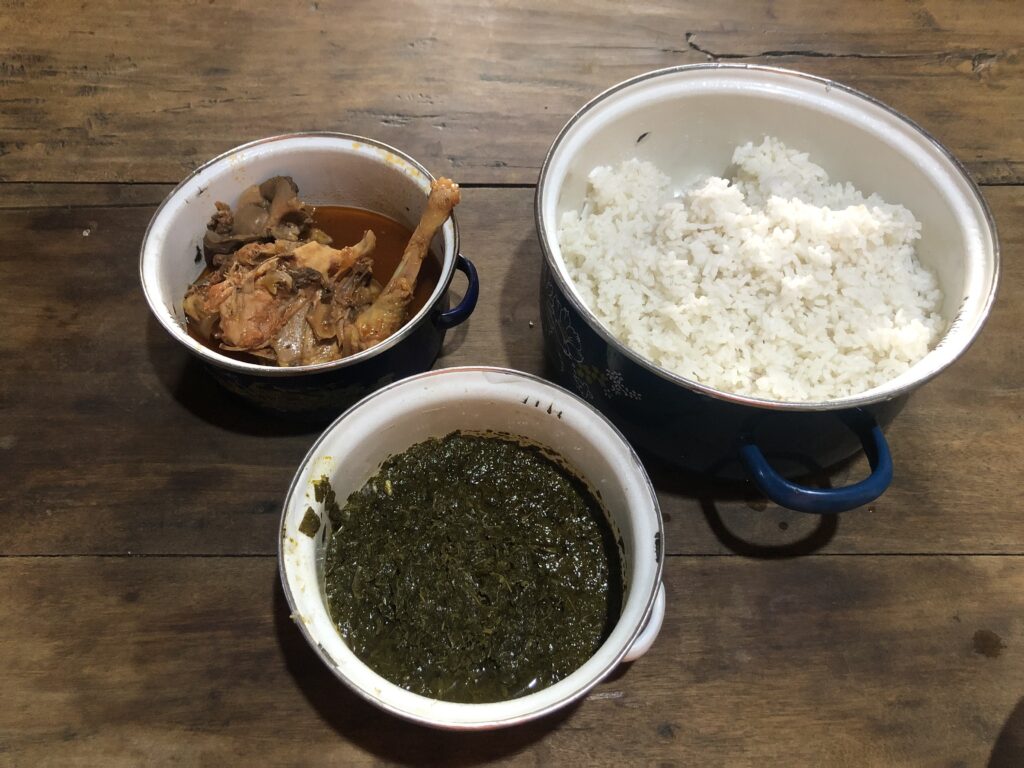
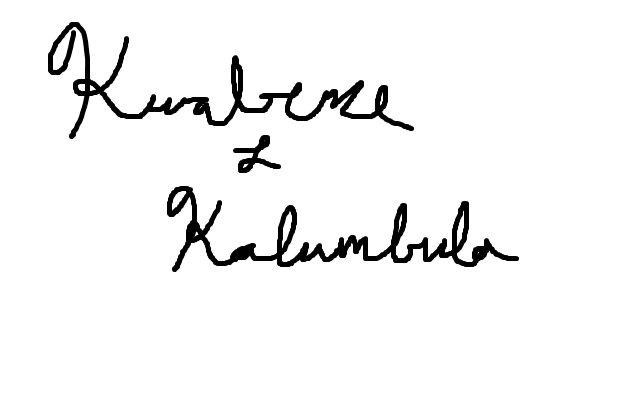
Vansina, Jan M. Paths Through the Rainforest: Toward a History of Political Tradition in Equatorial Africa. Madison, WI: University of Wisconsin Press, 1990.